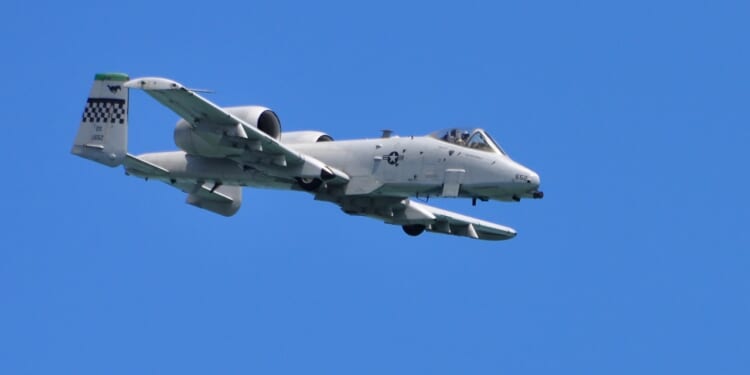“Air-to-ground” missions are launched to use air capabilities to achieve tangible outcomes on the ground—chiefly the destruction of enemy forces.
Air-to-ground (A2G) operations are exactly what they sound like—the use of aircraft to strike at targets on the ground. While the aircraft and munitions and tactics vary, an established crop of mission sets define A2G operations across conflicts. Understanding the different mission sets explains how air power can shape battles, campaigns, and grand strategy.
Close Air Support (CAS): Directly Aiding Ground Troops
Close Air Support (CAS) missions are granular, and often, politically sensitive. CAS aircraft in the US inventory include the A-10 Warthog, AH-64 Apache, and F-16 Fighting Falcon (and increasingly, armed drones). CAS is essentially the direct support of troops in contact with the enemy, requiring immediate, precise ground strikes. CAS emphasizes low altitude maneuvering, short sensor-to-shooter timelines, and weapons that minimize collateral damage. CAS directly protects ground forces, shaping tempo—especially in counterinsurgency or urban fighting. But in higher end conflicts, CAS can be less useful, as CAS operations are vulnerable to air defense systems.
Interdiction: Destroying Enemy Ground Troops
Interdiction missions aim to disrupt enemy force generation before it reaches the battle. American aircraft used for interdiction missions include the F-15E Strike Eagle and F-16, or stand-off platforms like the B-1B Lancer (or cruise missiles launched from ships and aircraft). Targets for interdiction strikes include logistics hubs, bridges, rail nodes, fuel depots, and troop concentrations. Interdiction is strategic in the campaign sense, aiming to degrade the enemy’s ability to fight, constricting options.
Suppression / Destruction of Enemy Air Defenses (SEAD/DEAD)
Suppression and Destruction of Enemy Air Defenses (SEAD/DEAD) is used to enable all other forms of A2G missions in contested airspace. SEAD forces, like the F-16CJ Wild Weasels (historically), or more recently, the F-35 Lightning II and EA-18G Growlers (and anti-radiation HARM missiles) are used to blind or destroy SAM networks and radar nodes. Effective SEAD reduces risk for strike packages and allows non-stealth aircraft to operate in contested air space. In modern high-end fights, SEAD features an integrated campaign of electronic attack, cyber, kinetic strikes, and deception—all performed at scale.
Strategic Strikes: Politics By Other Means
Strategic strike consists of deep, long-range attacks on high-value nodes, such as command centers, industrial bases, or nuclear facilities—as seen during Israel’s “Operation Rising Lion” and America’s “Operation Midnight Hammer” strikes on Iran over the summer.
For strategic strike missions, the US relies on strategic bombers (B-52 Stratofortress, B-2 Spirit, and B-1B Lancer), cruise missiles (JASSM, Storm Shadow), and standoff weapons. Strategic strike is valuable in shaping the adversary’s morale and war fighting capacity. Serving a political purpose as much as a military purpose, strategic strikes are often used in the opening salvos of a major campaign.
Anti-Surface Warfare (ASuW) at Sea
Maritime strike and anti-surface warfare (ASuW) are specialized A2G missions against ships and ports. Typically executed with the P-8 Poseidon, maritime strike variants of fighters, long-range anti-ship missiles, and submarines, maritime strike and AsuW are used to protect sea lines of communication and deny adversary naval maneuvers.
Across all of these A2G mission sets, the objective isn’t merely to destroy enemy ground targets, but to shape enemy behavior, protect friendly ground forces, and impose strategic choices on an adversary. A2G success relies on comprehensive factors, extending beyond the aircraft performing the actual mission, including persistent ISR, networked targeting, electronic warfare, tanker support, and robust logistics. When executed properly, A2G operations are highly influential to campaign outcomes.
About the Author: Harrison Kass
Harrison Kass is a senior defense and national security writer at The National Interest. Kass is an attorney and former political candidate who joined the US Air Force as a pilot trainee before being medically discharged. He focuses on military strategy, aerospace, and global security affairs. He holds a JD from the University of Oregon and a master’s in Global Journalism and International Relations from NYU.
Image: Shutterstock / Jordan Tan.


















